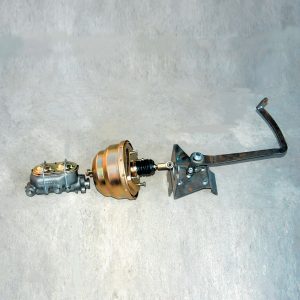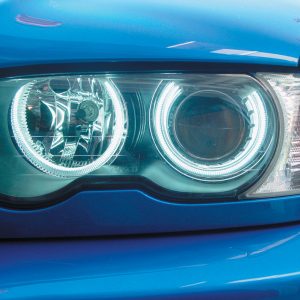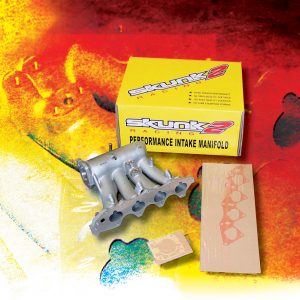Hot Rods
The automotive world became a different place when Chevrolet introduced the new ’55. Prior to that time there were many Chevy buyers, but after the ’55s were released there were newborn Chevy enthusiasts. The new Chevys were not only great-looking, but they were also powered with what would become one the finest V-8 engines available anywhere. There was an instant attraction to the ’55, and the interest continued to grow once the ’56 and ’57 were introduced. Fortunately, all three model years became extremely popular, so Chevy enthusiasts took care of them, and many nice examples remain today.
When the engineers at Chevrolet designed the fuel inlet and fuel cap for the early Nova, they must not have looked at the rest of the car. Novas aren’t called shoeboxes for no reason; with the exception of the wheels–and that gas cap–they are basically square. Wheels have to be round, but the gas cap, well….
If you are driving down the highway in an older car, you are at a major disadvantage if you have to make a quick stop. Many of the high-performance cars being built today have fantastic stopping power, and if you can’t stop as well as the car in front of you, that could certainly be a big problem. The owner of this ’55 Chevy improved it with front disc brakes that work well, but he wanted the Chevy to stop even better, so he decided to add rear disc brakes.
Replacing interior components is not usually that difficult, but interior repair–especially seat repair–requires skills, equipment and training which many enthusiasts may not have acquired. To find out what it takes to make a replacement seat, we went to the Performance Choice division of Mid America Motorworks in Effingham, Illinois.
The birth of the Mark IV 396 for public consumption occurred back in 1965. Its predecessor, the Mark I, started in 1961 on the drawing board, was finalized and built in late 1962, and was unveiled in race trim in 1963. It set the racing world on its collective ear at Daytona and other races, and then it disappeared, going back to Chevrolet Engineering for further development. Seeing that you could step up and possibly own the Marilyn Monroe of big-block engines, serious racers and enthusiasts had to sit on their hands for two full model years (1963 and 1964) before the son of this absolute powerhouse could be ordered.
Thirty-five years and $636 ago, we bought an 80,000-mile ’62 fuel-injected Corvette in Fresno, California. Sadly, the car had been stolen once. The fuel injection was gone as well as the T-10 four-speed transmission. A pair of bare 461-X heads was in the trunk. The engine was found to have a rocking rear cam bearing, which caused oil to shut off to the rocker arms at high rpm. At the time, the prognosis was that it could not be fixed, so the motor was replaced with a ’68 350hp 327. Since 1976, the car has been in storage, along with the original engine.
If you have spent any amount of time working on street machines, you are well aware that “bolt-on” parts do not always bolt right on. Still, it’s often a lot easier to modify those parts than to fabricate your own. The same holds true for such items as rollcages. Nobody pretends that a prefab cage is going to drop right into place without having to trim a single tube. That’s mainly because the economies of scale dictate that manufacturers make a single design fit as many cars as possible. Unfortunately, a cage that fits many cars probably fits no car perfectly.
Small-block water pumps are common replacement parts and are available at prices that are nearly impossible to beat. However, while getting a brand-new water pump for cheap is great, sometimes you need to keep the one you have. If it’s date-coded, or maybe you’ve installed a chrome steel or an aluminum water pump. You aren’t going to get those at the parts counter. In cases like these, rebuilding a water pump is preferred to buying a new one.







